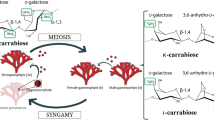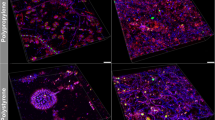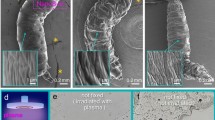Abstract
IN a recent paper, I. Mackenzie Lamb1 directed attention to the use of polyethylene glycol (‘Carbowax’) for the permanent preservation of algal material for microscopic study. He shows that it is practicable to preserve algae in the dry state embedded in polyethylene glycol and mounted on cards. When a portion is required for study, part of the card is snipped off and soaked in water. The alga then resumes its original state sufficiently well for detailed microscopic examination.
This is a preview of subscription content, access via your institution
Access options
Subscribe to this journal
Receive 51 print issues and online access
$199.00 per year
only $3.90 per issue
Buy this article
- Purchase on Springer Link
- Instant access to full article PDF
Prices may be subject to local taxes which are calculated during checkout
Similar content being viewed by others
References
Lamb, I. M., Rev. Algol., N.S., 4 (3), 198 (1959).
Author information
Authors and Affiliations
Rights and permissions
About this article
Cite this article
FRASER, J. Use of Polyethylene Glycol in Biology. Nature 189, 241–242 (1961). https://doi.org/10.1038/189241a0
Issue Date:
DOI: https://doi.org/10.1038/189241a0
Comments
By submitting a comment you agree to abide by our Terms and Community Guidelines. If you find something abusive or that does not comply with our terms or guidelines please flag it as inappropriate.



